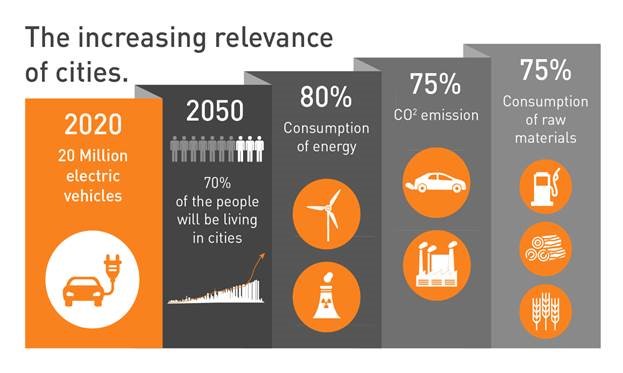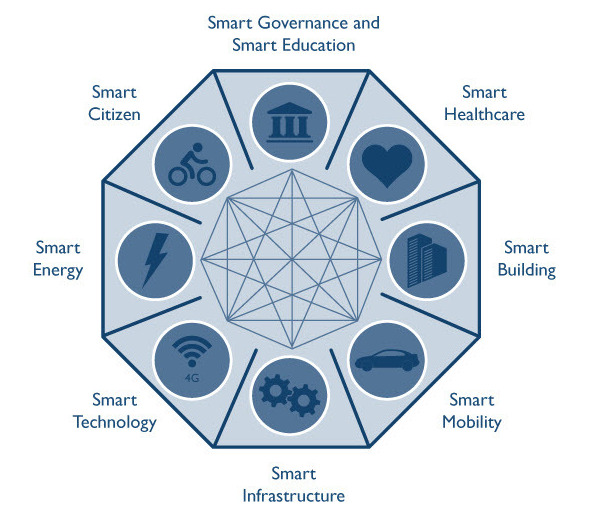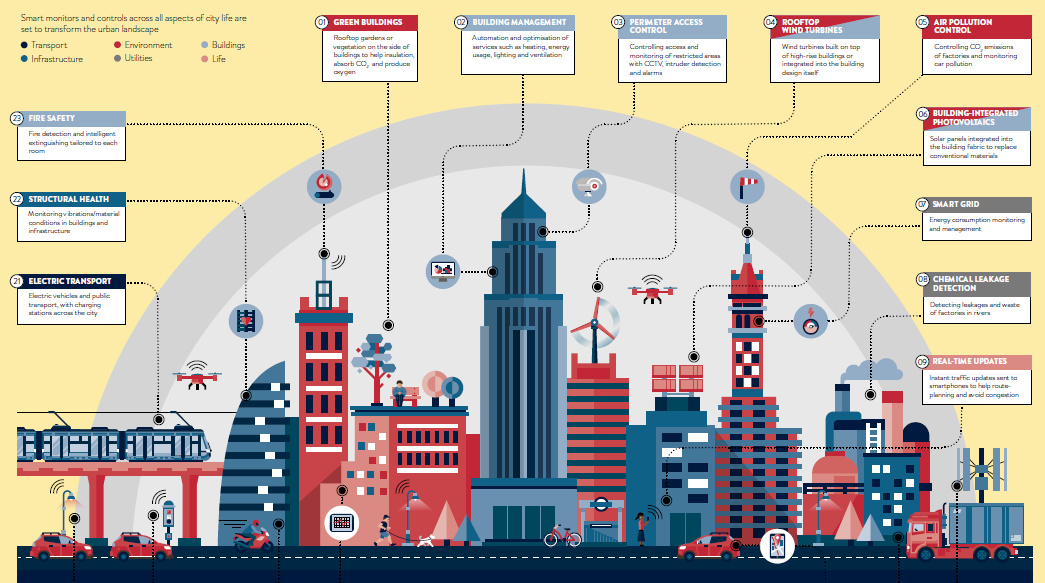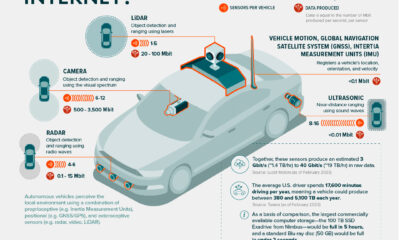As the world’s biggest cities continue to sprawl with many millions of new people, they’ll look to many of the technologies and tactics covered in today’s infographic from Raconteur to work smarter – and not harder – for their inhabitants.
Why Cities?
Cities are the engines of modern society. They power the global economy, consume vast amounts of resources, house the majority of the world’s population, and create much of the pollution and emissions that have scientists concerned about the future.
And while big cities consume a lot of resources already – this hardly compares to the megacities of the near-future. In fact, in our lifetimes, we will see massive urban areas in Africa and Asia with populations that swell to 50 million people or more. That’s right – there will be swelling urban populations that consume more food, energy, and materials than most countries.
The Right Timing
While the prospect of optimizing for the problems of burgeoning metropolises may seem daunting, the timing is actually perfect. The arrival of the Internet of Things (IoT) – thanks to innovations in cheap sensor technology, big data, and predictive analytics – is making it possible to tackle all sorts of urban issues. Integrating this, along with other advancements in information communication technology (ICT), into urban planning is the vision for smart cities:
But, enough on the broad strokes of this movement – here’s how specific changes are taking place.
Working Smarter, Not Harder
Here are some of the initiatives taken on by the people running the smartest cities today: Smart roads Monitoring vehicle and pedestrian levels to optimize or divert traffic according to conditions. Intelligent, adaptive fast and slow lanes for walking and cycling. Smart buildings Rooftop gardens or vegetation on sides of buildings to help with insulation. Optimization of heating, energy usage, lighting, and ventilation. Integrating photovoltaics and wind turbines into building designs. Smart lighting Intelligent and weather adaptive street lights to boost energy efficiency. Smart waste management Monitoring garbage levels in containers in real-time to optimize collection routes. Smart grids Energy consumption monitoring and management. Uses tech to detect and react to local changes in usage. And cities aren’t the only thing becoming smarter. See how the home is becoming smarter, as well. on Even while political regimes across these countries have changed over time, they’ve largely followed a few different types of governance. Today, every country can ultimately be classified into just nine broad forms of government systems. This map by Truman Du uses information from Wikipedia to map the government systems that rule the world today.
Countries By Type of Government
It’s important to note that this map charts government systems according to each country’s legal framework. Many countries have constitutions stating their de jure or legally recognized system of government, but their de facto or realized form of governance may be quite different. Here is a list of the stated government system of UN member states and observers as of January 2023: Let’s take a closer look at some of these systems.
Monarchies
Brought back into the spotlight after the death of Queen Elizabeth II of England in September 2022, this form of government has a single ruler. They carry titles from king and queen to sultan or emperor, and their government systems can be further divided into three modern types: constitutional, semi-constitutional, and absolute. A constitutional monarchy sees the monarch act as head of state within the parameters of a constitution, giving them little to no real power. For example, King Charles III is the head of 15 Commonwealth nations including Canada and Australia. However, each has their own head of government. On the other hand, a semi-constitutional monarchy lets the monarch or ruling royal family retain substantial political powers, as is the case in Jordan and Morocco. However, their monarchs still rule the country according to a democratic constitution and in concert with other institutions. Finally, an absolute monarchy is most like the monarchies of old, where the ruler has full power over governance, with modern examples including Saudi Arabia and Vatican City.
Republics
Unlike monarchies, the people hold the power in a republic government system, directly electing representatives to form government. Again, there are multiple types of modern republic governments: presidential, semi-presidential, and parliamentary. The presidential republic could be considered a direct progression from monarchies. This system has a strong and independent chief executive with extensive powers when it comes to domestic affairs and foreign policy. An example of this is the United States, where the President is both the head of state and the head of government. In a semi-presidential republic, the president is the head of state and has some executive powers that are independent of the legislature. However, the prime minister (or chancellor or equivalent title) is the head of government, responsible to the legislature along with the cabinet. Russia is a classic example of this type of government. The last type of republic system is parliamentary. In this system, the president is a figurehead, while the head of government holds real power and is validated by and accountable to the parliament. This type of system can be seen in Germany, Italy, and India and is akin to constitutional monarchies. It’s also important to point out that some parliamentary republic systems operate slightly differently. For example in South Africa, the president is both the head of state and government, but is elected directly by the legislature. This leaves them (and their ministries) potentially subject to parliamentary confidence.
One-Party State
Many of the systems above involve multiple political parties vying to rule and govern their respective countries. In a one-party state, also called a single-party state or single-party system, only one political party has the right to form government. All other political parties are either outlawed or only allowed limited participation in elections. In this system, a country’s head of state and head of government can be executive or ceremonial but political power is constitutionally linked to a single political movement. China is the most well-known example of this government system, with the General Secretary of the Communist Party of China ruling as the de facto leader since 1989.
Provisional
The final form of government is a provisional government formed as an interim or transitional government. In this system, an emergency governmental body is created to manage political transitions after the collapse of a government, or when a new state is formed. Often these evolve into fully constitutionalized systems, but sometimes they hold power for longer than expected. Some examples of countries that are considered provisional include Libya, Burkina Faso, and Chad.


















